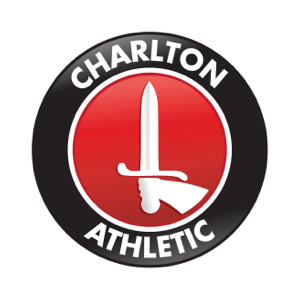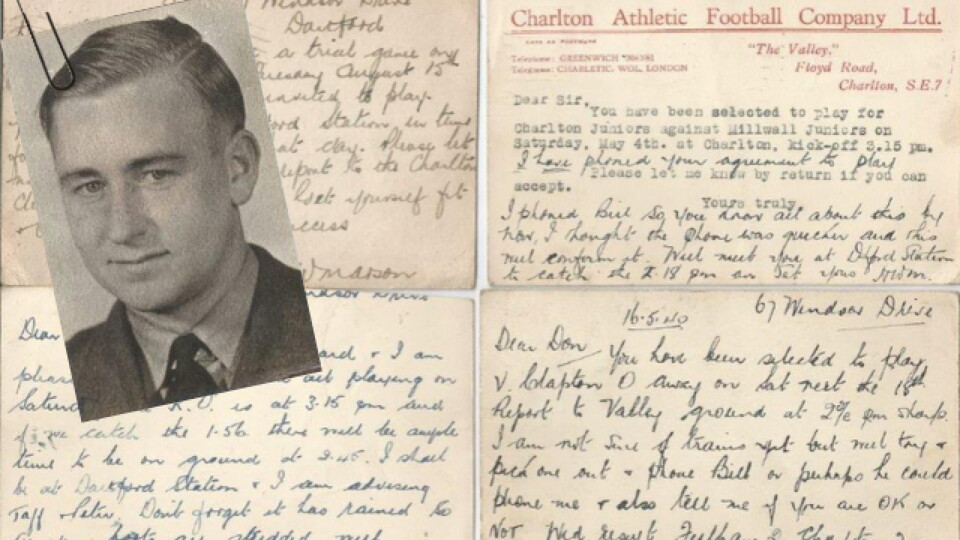The Charlton Athletic Museum were contacted, as we often are by relatives, asking if we had more information on Donald Homer.
We were able to give them some more detail on his playing career and his military service but it turned out the family knew more than us about his too short and ultimately tragic career.
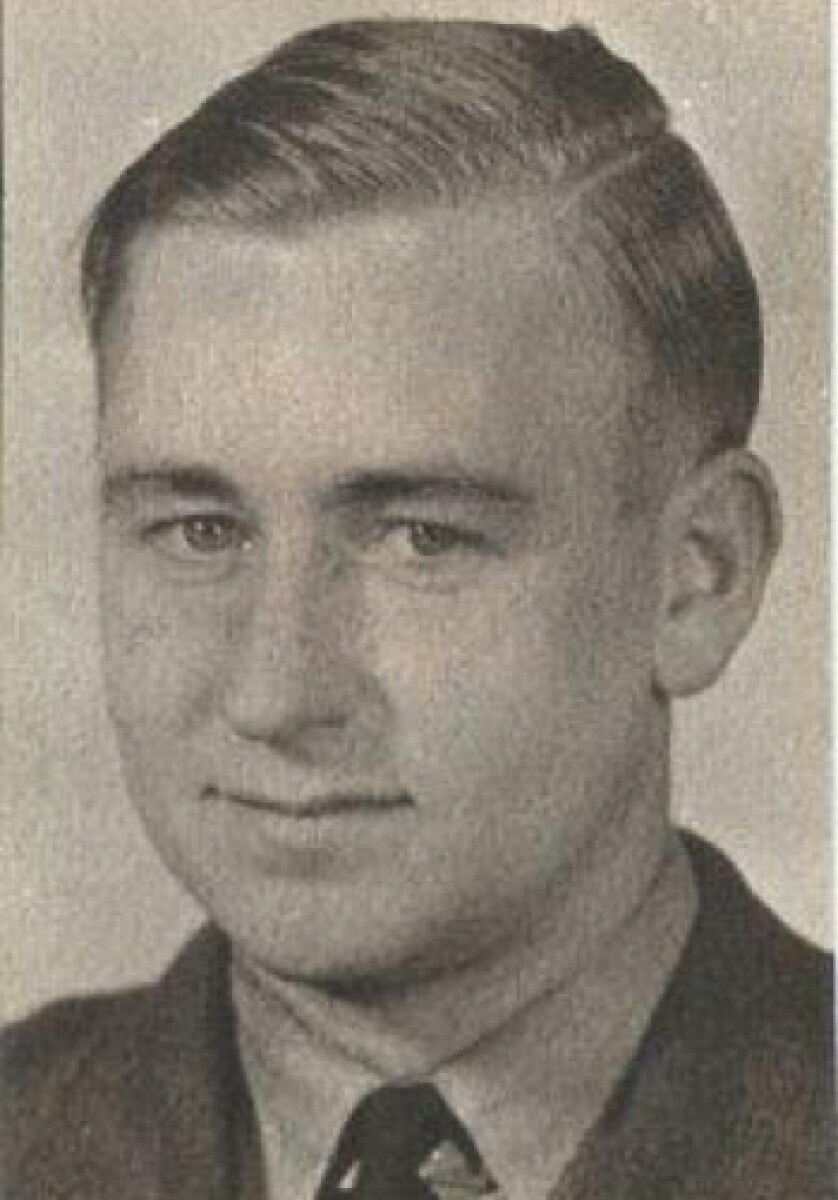
A portrait photograph of Donald Homer. Photo: J Broad
Born on August 2nd, 1921, Don lived in Spring Vale, Dartford and was educated at Dartford West Central School which we believe became Dartford Technical College. His was a good linguist and spoke German.
He was also a very good footballer and in 1939 was signed to play for Charlton’s new youth team. The London League had been set up for amateurs only and was a means of finding talent to replace first teamers who had gone into the services after the second world war broke out in September 1939.
His family still own the post cards sent by, presumably Charlton’s London League coach, H W Marson, to inform him that he’d been selected to play and remind him which train to catch.
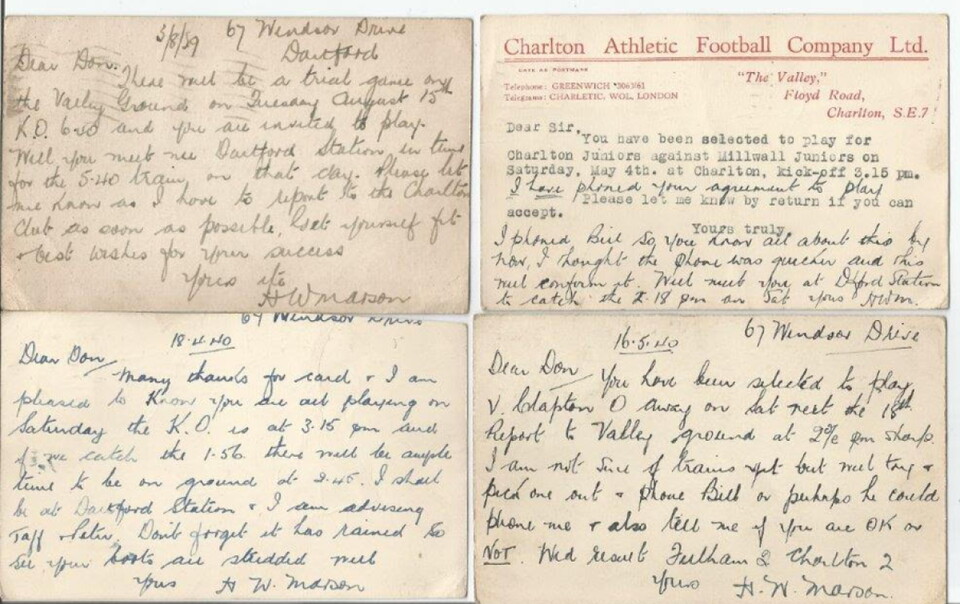
Postcards informing Donald Homer of his trial game and subsequent call ups. Photo: J Broad
The London Junior League (not to be confused with the London League, which was the league in which the first team played in 1941/2) was started in 1939/40 and initially attracted good support; 3,000 watched the Charlton youngsters at The Den in April 1940. But during 1940/41 interest waned considerably and matches towards the end of the season seem to have been mainly attended by relatives of the teams.
Don and his teammates won the initial London Junior League in 1939/40 with Don himself scoring five goals in 12 games. He also played for the team in the 1941 season although the records are not complete. Jimmy Seed notes in his match diary that a “Game with Brentford cancelled owing to bomb being on ground”.
Don was an inside forward, what we might now call an attacking midfielder or second forward. First-team manager Seed was well aware of Homer’s talent, saying that he would not be afraid to play him in the first team immediately. A huge compliment given that Charlton had finished fourth in the top flight in 1938/39, the last full season before war broke out.
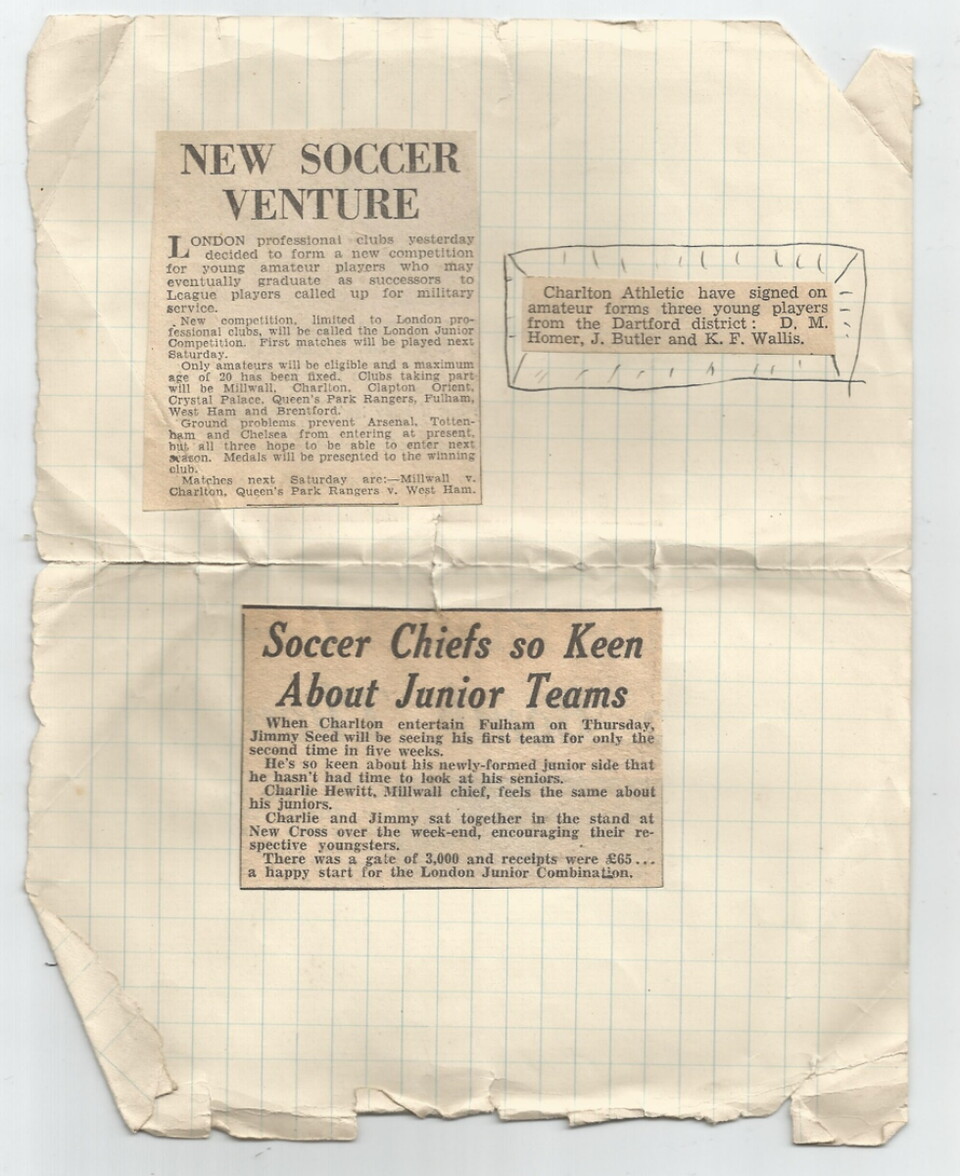
Press cuttings about the Junior League and Homer and other Dartford Youngsters signing for Charlton. Photo: J Broad
Seed watched many of the Junior League games, often missing first-team games to do so, looking for players who could move up to the First Division side. He keep notes on each performance which are now held in the Charlton Athletic Museum.
Homer was described by Seed as “The pick of the bunch, nice build and looks a player. Aged 18.” And from another game as “Quick and always moving forward. Will make a good player”

Extract of letter home from Don Homer asking how Charlton have been getting on as “There is no way of finding out here” Photo: J Broad
As a young, fit man, Homer was always going to end up in the forces and he joined the Royal Air Force Volunteer Reserve. He rose to the rank of Sergeant and trained as a navigator (bomber), first in the UK and then in Canada. Air crews often travelled across the Atlantic to learn their skills but this must have been a huge thrill to a young boy from Dartford when flying and nearly any type of peacetime overseas travel were very rare.
The family have various photos of his time in the RAF and one of Don and his crewmates in the snow may well be from his time in Canada. Don’s family still have letters which he wrote while he was serving overseas where he frequently asked how Charlton were getting on.
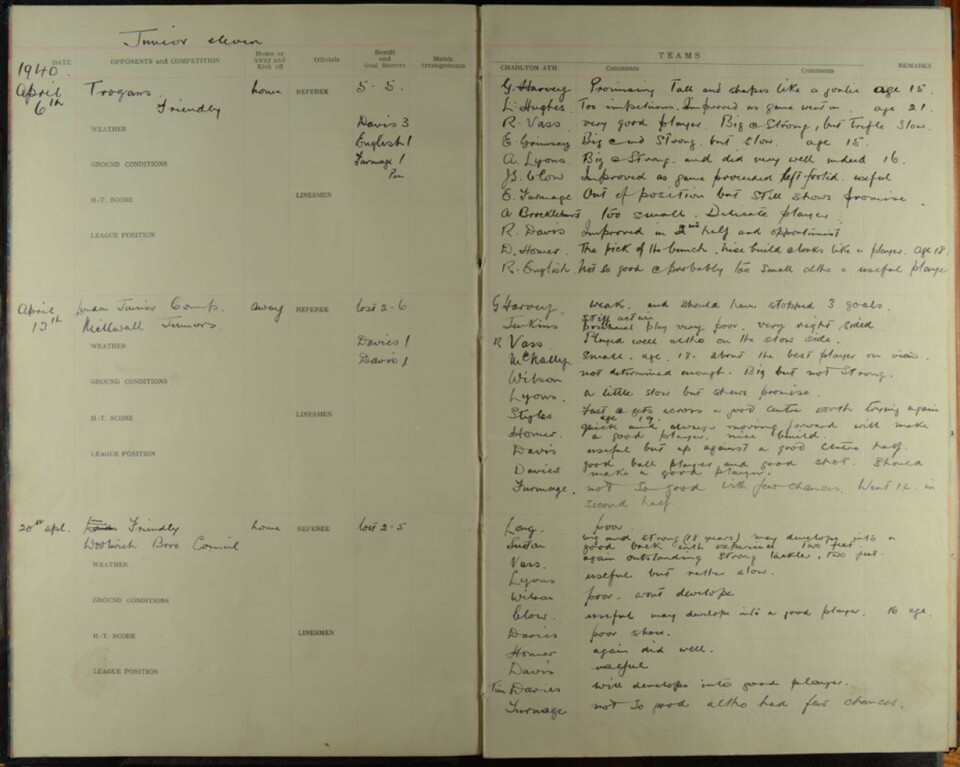
Jimmy Seed’s London Junior League match diaries including mentions of Donald Homer. From the Charlton Athletic Museum’s collection. Photo: Paul Baker
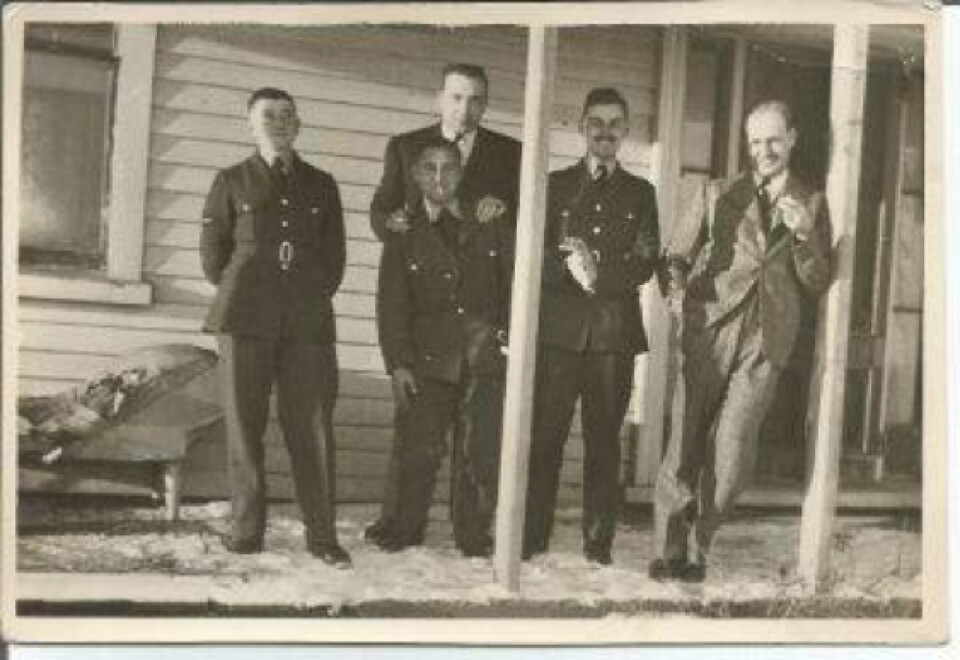
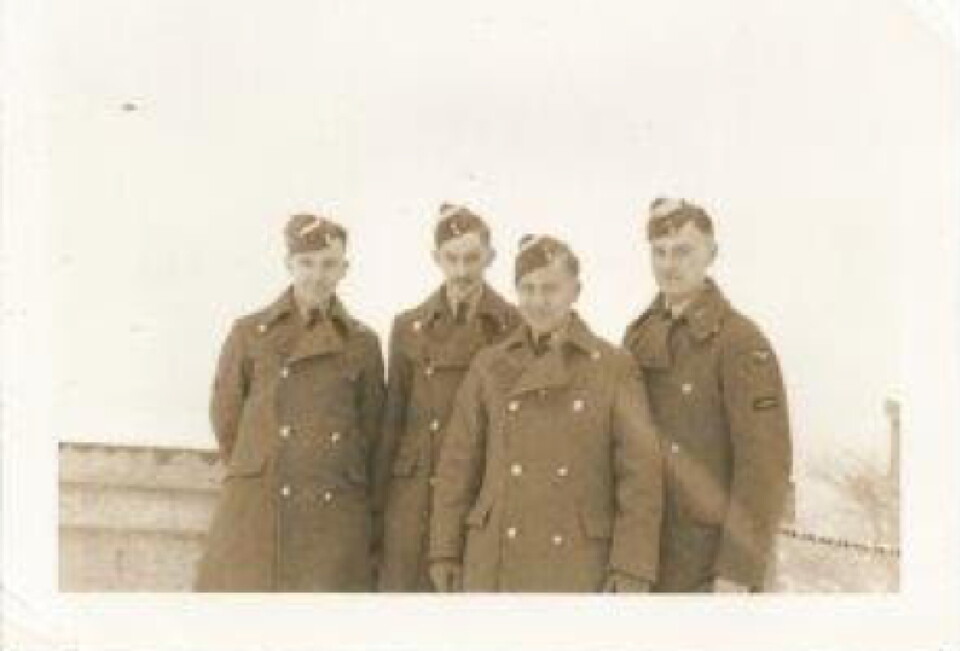
Group photos of Don Homer with crew mates, possibly taken in Canada. Photo J Broad
Don returned to England and was serving with No1 O.A.DU (Overseas Aircraft Despatch Unit). This unit used RAF Portreath in Cornwall as a stepping stone when providing ferry flights supplying aircraft to North Africa & the Middle East.
On April 16th, 1943, Donald, aged only 21; the oldest of the sergeants was only 24, was navigator on a ferry flight aboard a Bristol Blenheim Mk IV serial no EH374 along with experienced Pilot Sgt Leslie Ayers (Royal New Zealand Air Force) and Wireless Operator Boris Cornhill.
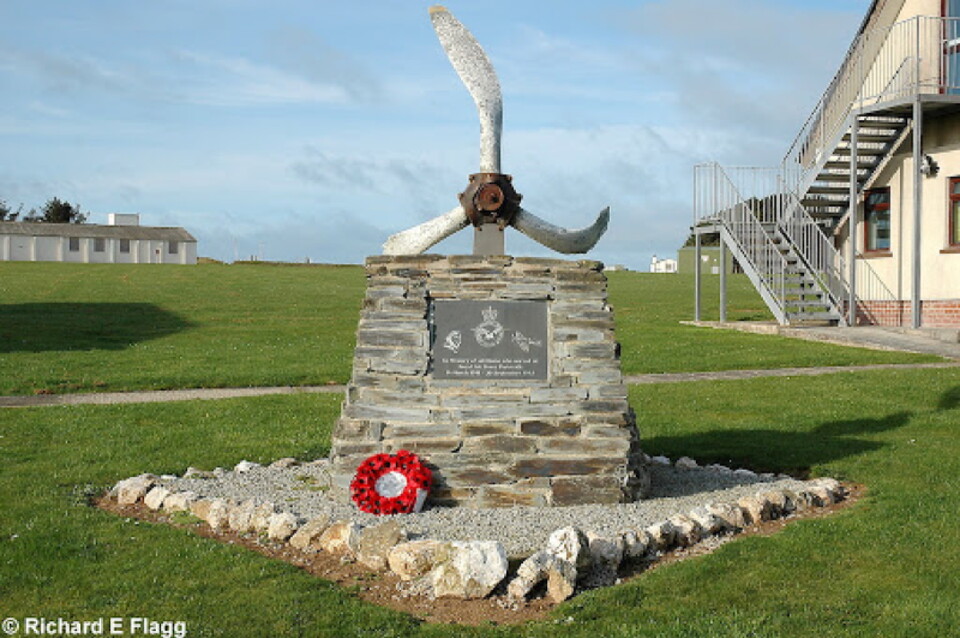
Ferry Crews memorial: Photo: Richard E Flagg
Around 2.30pm, Don’s plane was circuiting the airfield when it collided in mid-air with a Spitfire VC AB518 from 65 Squadron flying out of RAF Perranporth.
The collision took place 3/4 of a mile south of Portreath. All three crew members were killed along with Sgt Vernon Smith (Royal New Zealand Air Force) flying the Spitfire.
It was suggested at the time that Vernon Smith was turning a right-hand circuit heading into the sun that may have prevented him from seeing the approaching Blenheim. It is thought that there may also have been a civilian casualty on the ground but we have not been able to confirm this.
Boris Cornhill from Bedford has a fascinating inscription on his headstone 'He had the courage to Seek, Hunt and Destroy the Kings Enemies in their own lairs'. Both Leslie Ayers and Vernon Ross were buried in nearby Illogan Churchyard.
There is a memorial to Ferry Crews on the airfield at Portreath.
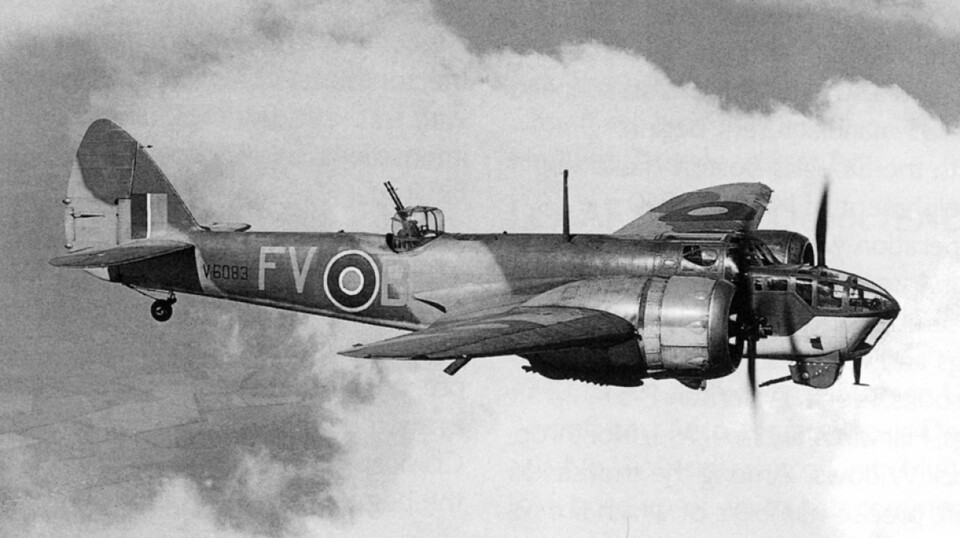
Bristol Blenheim Bomber as in flown in by Donald Homer. Stock Photo
Don’s widowed mother received a letter of condolences from his commanding officer and also from Jimmy Seed, in which he had described him as having a “bright football future if he had survived”.
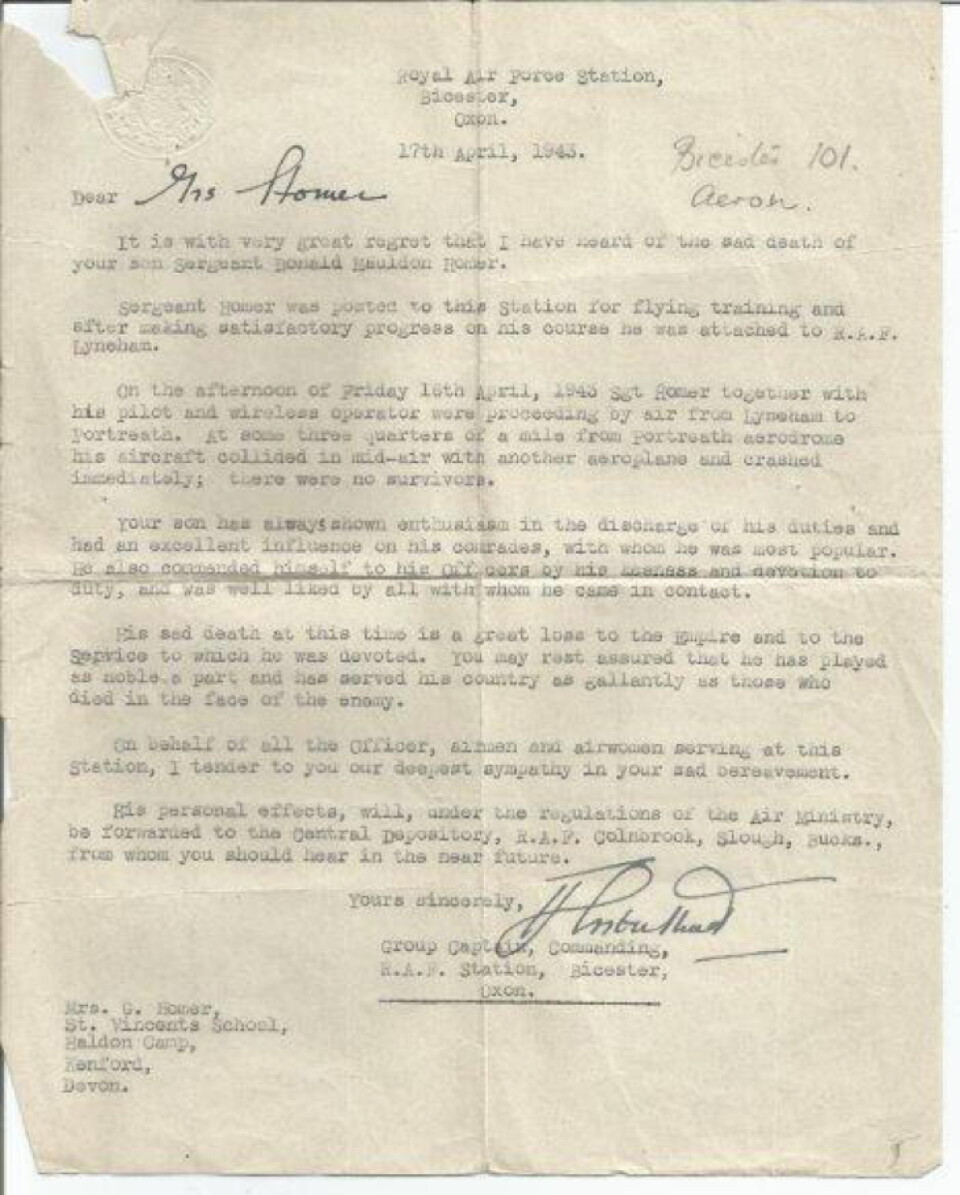
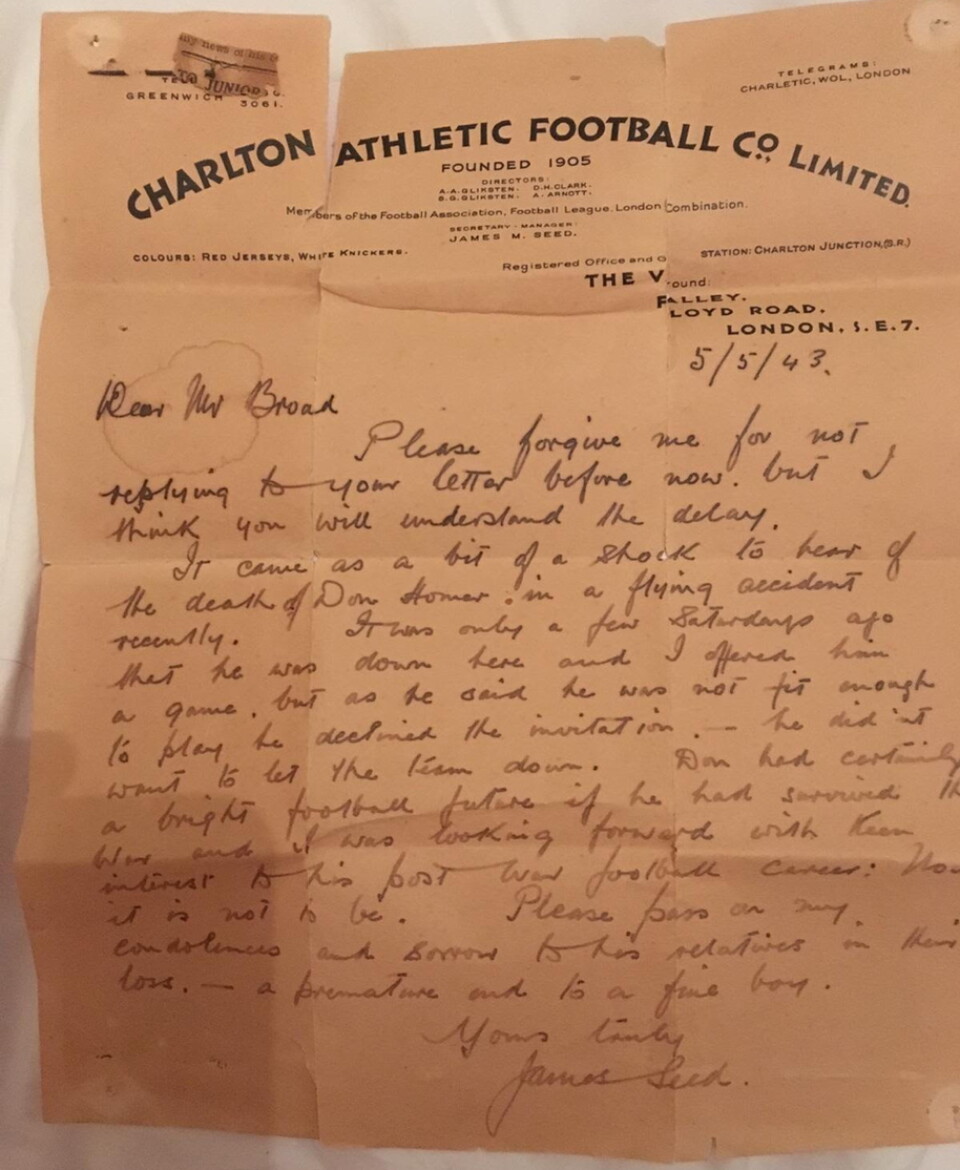
Letters of condolences from Homer’s commanding officer and from Jimmy Seed. Photo J Broad
His possessions were also returned to his widowed mother. The envelope, as well as the letters have been retained by his family to this day.
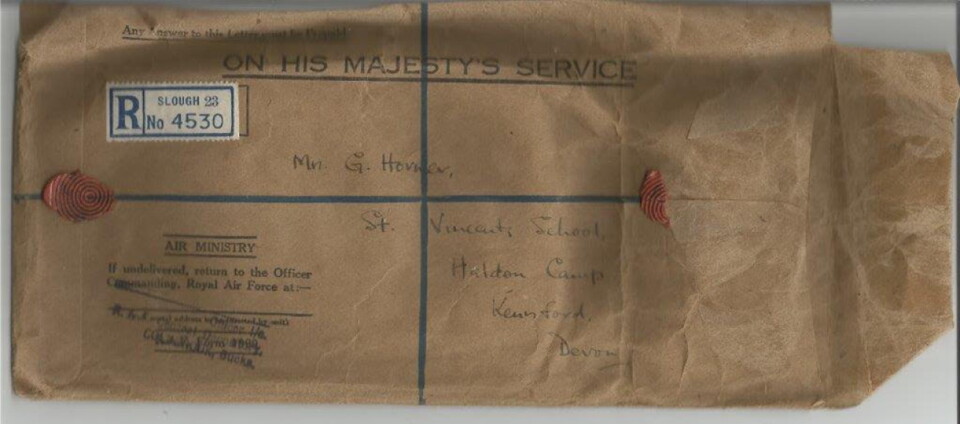
Parcel originally containing Donald Homer’s RAF possessions sent to widowed mother. Photo J Broad
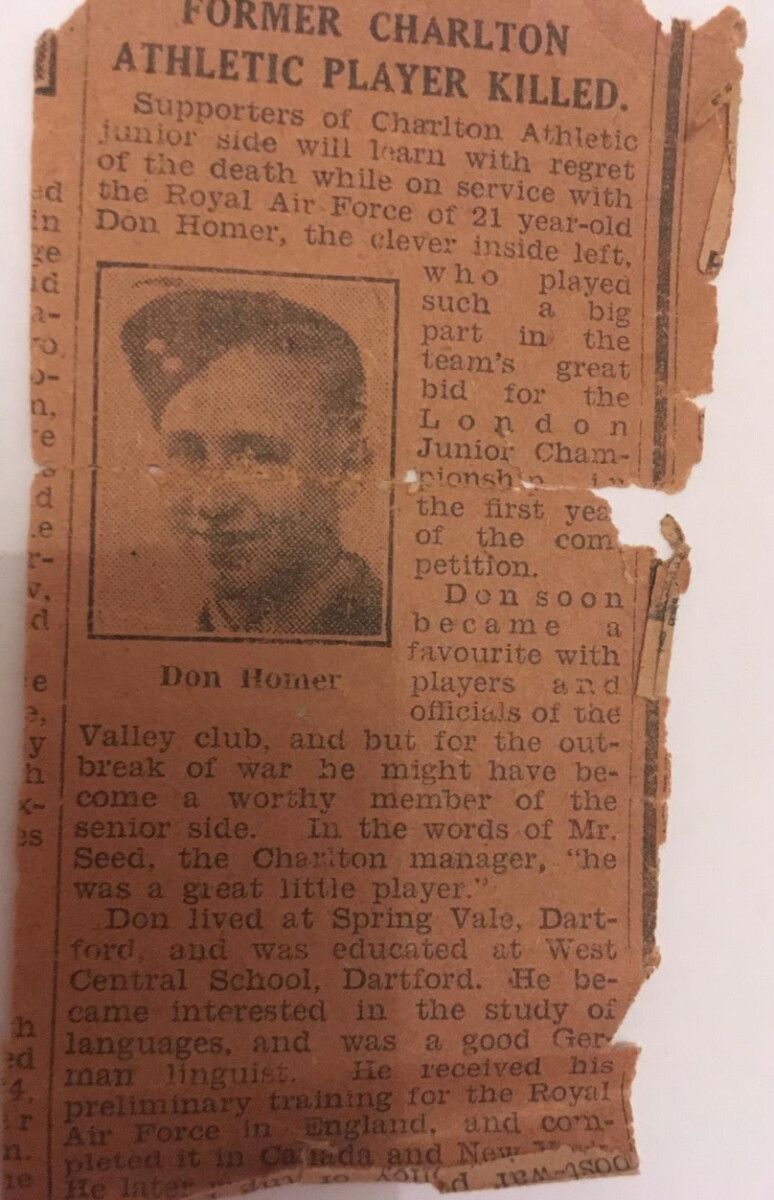
Press cutting (newspaper unknown) recording Donald Homer’s death. Photo: J Broad
Donal Mauldon Homer is buried in Watling St Cemetery, near his Dartford home, and his final resting place, which he shares with both his parents, is marked by a Commonwealth War Graves Commission headstone like so many young men and women who lost their lives far too early.
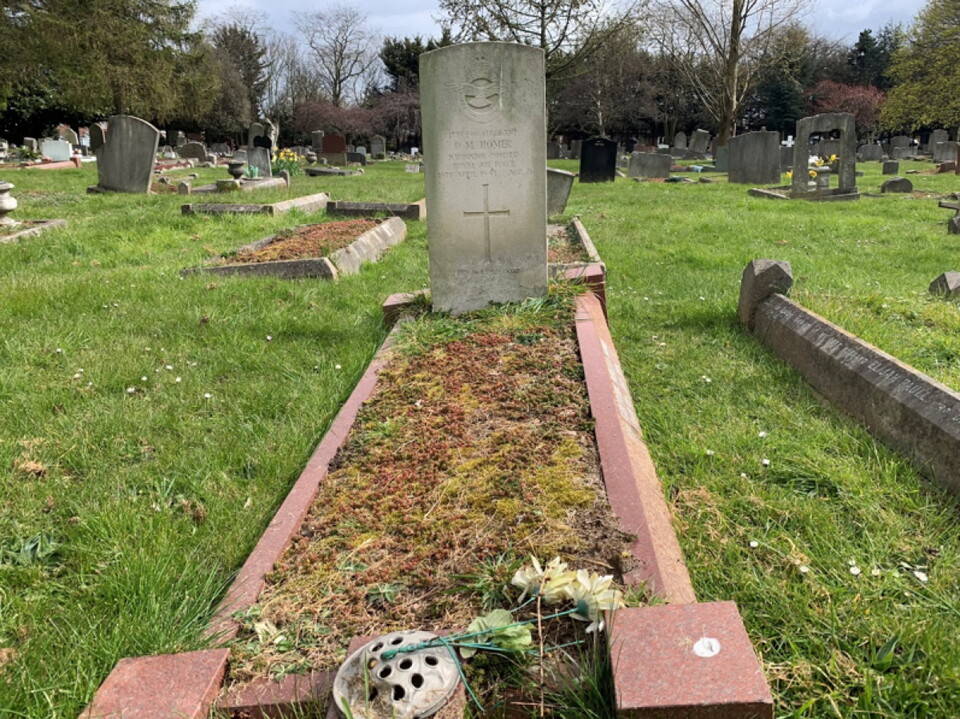
Donald Homer’s grave at Dartford Watling St Cemetery. Photo: Brandon Smith
We are very grateful for Don’s family for sharing his story and the various letters and newspaper clippings that we have used to write this article and hope that he will now be remembered by Charlton fans.
Lest We Forget.
By Ben Hayes with additional information from Jonnie Broad, Paul Baker and Clive Harris.
The Charlton Athletic museum is a registered charity run by volunteers and is independent of the football club
Enquiries and donations can be made via cafchistorian@gmail.com
